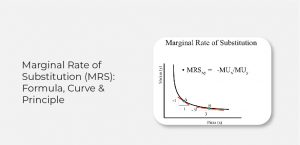The buy low, sell high strategy is a time-tested investing principle that can be used to make money in the stock market. The idea is to buy stocks when they are trading at a discount relative to their intrinsic value and sell them when they become overvalued. This approach requires a fair amount of analysis and patience, but it can be a very profitable way to invest.
One of the benefits of using this strategy is that it allows you to profit from market crashes. When the stock market crashes, many stocks become undervalued and present a buying opportunity. Conversely, when the stock market is doing well, many stocks become overvalued and present a selling opportunity.
Another benefit of this strategy is that it helps you avoid buying bubble stocks. Bubble stocks are stocks that are trading at inflated prices and are likely to fall in price once the bubble bursts.
What Is Buy Low, Sell High?
Many people are looking to make a quick buck in the stock market, but don’t know how to go about it. One popular way to make money is by buying low and selling high. This involves finding stocks that are undervalued and selling them when they become overvalued. It can be difficult to do, but with enough research, anyone can be successful.
There are a few things you need to consider before buying low and selling high. The most important thing is to have a plan and stick to it. You also need to be comfortable with risk, as there is always the potential for losses when investing in the stock market.
It’s also important to know what you’re buying. Not all stocks are created equal, so you need to do your research before investing. Look for companies that are profitable and have a good track record.
Does buying low and selling high really make a difference?
There is a lot of debate surrounding the idea of buying low and selling high in the stock market. Some people believe that this is the key to making a lot of money, while others think that it’s impossible to time the market in this way. In reality, there is no right answer – it all depends on your individual circumstances and the stock market itself. However, if you are looking to make money in stocks, it’s worth considering whether or not buying low and selling high is really the best strategy.
On the one hand, buying low and selling high sounds like a foolproof way to make money in stocks. After all, who wouldn’t want to buy something for cheap and sell it for more? The problem is that stock prices are not always rational, and they can be influenced by a number of different factors.
The Benefits of Buy Low, Sell High
The saying goes that you should buy low and sell high. It’s sound advice, and it can make you a lot of money in the stock market. But what does it mean, and how do you do it?
To buy low, you need to find stocks that are undervalued by the market. This can be done by looking at a company’s financial statements and comparing them to other companies in the same industry. You can also use indicators such as the price-to-earnings ratio or the price-to-book value ratio.
Once you’ve found a company that is undervalued, you need to buy shares of its stock. You should then hold on to those shares until the stock price rises to its fair value. At that point, you can sell your shares and make a profit.
The Dangers of Buy Low, Sell High
Investors are often told that they should buy low and sell high. While this may seem like sound advice, it’s actually a very dangerous strategy. Here are a few reasons why you should be careful when implementing this approach:
- It can be difficult to determine when a stock is truly at its low point or when it has peaked. Trying to time the market is never easy, and even professional investors often get it wrong.
- When you buy low, you’re essentially betting that the stock will go up from here. But what if it doesn’t? You could end up losing money on the investment, which defeats the entire purpose of buying low in the first place.
- Selling high also carries risk. If the stock drops after you sell, you could end up taking a loss on the investment.
Conclusion
In conclusion, it is important to buy low and sell high in order to maximize profits. By keeping an eye on the market and buying when prices are low, you can ensure that you are getting the best deals possible.
Additionally, by selling when prices are high, you can ensure that you are making the most money possible on your investments. Thanks for reading! Open today



